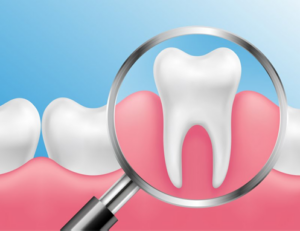The 3 Different Types of Gum Grafts – And Why You Might Need One
September 1, 2025

Did you know that there are not one, not two, but three different types of gum grafts? If you’re not even sure why you would need one in the first place, this information probably seems overwhelming. After all, you would have to do three times the amount of research just to understand which treatment would be best for you!
Don’t worry – gum grafts are actually rather straightforward once you break them down. Keep reading for a quick (and simple) guide to gum grafts.
Why Would I Get a Gum Graft?
First thing’s first; the different types of gum grafts aren’t going to make much sense if you’re not sure why you would even need one. Basically, periodontists use this treatment to address gum recession. This is when your pinkish oral tissue pulls away from your teeth, making it appear as though your gums are shrinking or your pearly whites are getting longer.
The aesthetics of a small gumline can be bothersome, but if the tissue exposes any dental roots, you’ll likely also experience discomfort and sensitivity. In severe cases, gum recession can even lead to tooth loss. A gum graft can not only restore your smile cosmetics, but also improve your dental health.
Types of Gum Grafts
During a gum graft procedure, your periodontist will essentially take tissue from one area of your mouth and “attach” it to your receding gumline. There are three different ways your periodontist can get this “extra” tissue – hence why there are three different types of grafts. Here’s what you need to know about each:
- Connective Tissue Grafts are when a periodontist makes a small incision at the roof of your mouth, creating a small flap. They’ll collect tissue from underneath the flap, graft it onto your gums, and stitch the flap closed.
- Free Gingival Grafts are similar to connective tissue grafts. Instead of creating a flap, your periodontist will simply take tissue directly from the roof of your mouth. Since less tissue can be extracted this way, this method is more commonly used for those who have a thinning gumline.
- Pedicle Grafts use tissue from a thicker, healthier area of your gums. Your periodontist will once again make a small incision and flap, but the flap will be pulled down or over to cover the exposed root nearby. It’s best for patients who have a good amount of gum tissue near the exposed root.
It can be difficult for the average person to know which type of gum graft will be best for them. A specialist like a periodontist, however, has years of training and education under their belt. Rest assured, your periodontist in Huntington Beach will recommend the method that suits your needs!
About the Author
Dr. Justin Braga is a board-certified periodontist with outstanding accomplishments in his field. He keeps up with the latest technology and treatment methods, far exceeding the minimum required continuing education credits for periodontists each year. Basically, Dr. Braga is highly qualified to help you determine whether you need a gum graft, as well as which one would be best for your smile. To schedule a consultation, call his office at 714-587-9094 or request an appointment online.
No Comments
No comments yet.
RSS feed for comments on this post.
Sorry, the comment form is closed at this time.
